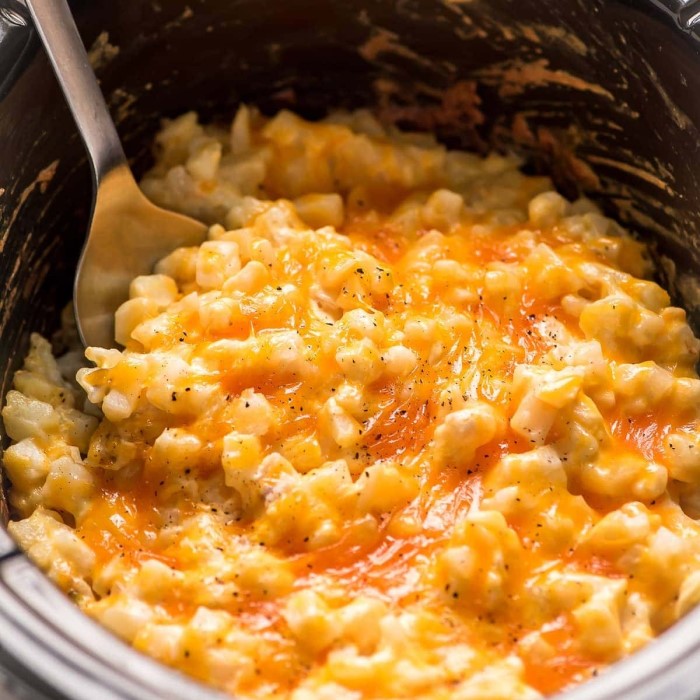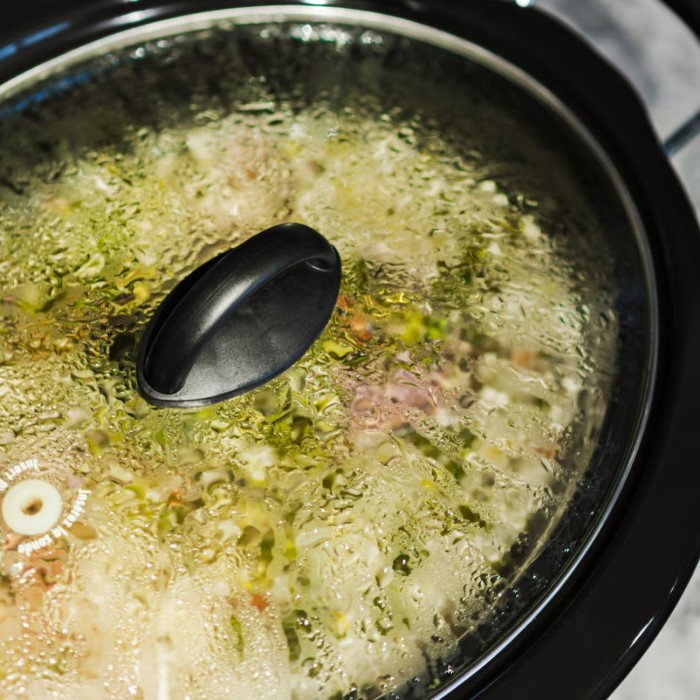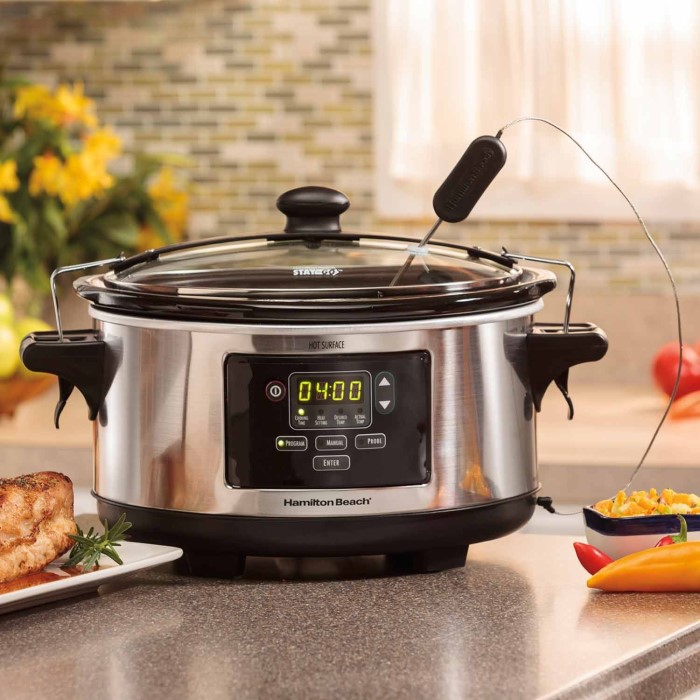How Crockpots Work: A Quick Overview
Crockpots, also known as slow cookers, are kitchen appliances designed for slow, consistent cooking. Can you leave a crockpot on overnight? They are popular for their ability to make cooking easier and hands-free. Understanding how they function is key to their safe and effective use.

What is a Crockpot?
A crockpot is an electric appliance designed for long, slow cooking. It typically consists of three main parts: a ceramic or metal pot, a heating element, and a lid. The pot holds the food, while the heating element surrounds it and provides gentle, consistent heat. The lid helps trap the heat and moisture, ensuring even cooking.
Crockpots are widely used for soups, stews, and other slow-cooking recipes. They are ideal for busy lifestyles as they require minimal supervision. Once set, they cook meals over several hours without the need for constant attention.
The Mechanism Behind Slow Cooking
Crockpots use low, steady heat to cook food over extended periods. The process begins when the heating element warms the pot evenly. Unlike traditional cooking, the temperature in a crockpot is much lower, usually ranging between 190°F (low setting) and 300°F (high setting). This prevents burning and allows flavors to blend harmoniously.
The lid plays a key role in maintaining a sealed cooking environment. It traps steam, which circulates inside the pot, keeping food moist and tender. This method is especially effective for tougher cuts of meat or fibrous vegetables. Slow cooking breaks down fibers, resulting in soft, flavorful meals.
Using a crockpot involves little risk when done correctly. Its simple design and self-regulating heat make it a reliable tool, perfect for overnight cooking. However, users must understand its safety features and best practices for optimal results.
Understanding Crockpot Safety Features
Can you leave a crockpot on overnight? Crockpots are designed with multiple safety features to ensure safe and efficient use. Knowing these features can help users operate the appliance responsibly, especially for overnight cooking.
Built-in Safety Mechanisms
Modern crockpots come with built-in safety mechanisms to prevent accidents. These features include automatic shutoff systems, which turn the appliance off after a set time to avoid overheating. Some models also have heat-resistant handles and sturdy lids to minimize the risk of burns or spills.
Temperature stability is another critical safety feature. Crockpots maintain a consistent heat level, ensuring food cooks evenly without reaching excessive temperatures. This minimizes the risk of fire or food spoilage.

Additionally, many crockpots are equipped with thermal fuses. These fuses cut power if the appliance overheats, adding an extra layer of protection. These mechanisms make crockpots one of the safest kitchen appliances for long, unattended cooking.
Energy Efficiency and Heat Control
Crockpots are energy-efficient and draw less power compared to other cooking appliances. Their low wattage design ensures cost-effective operation, even during extended cooking periods.
Heat control is another advantage. Crockpots cook food at low, steady temperatures, generally ranging from 190°F to 300°F. These controlled temperatures reduce the risk of burning or overheating.
The sealed design, including tight-fitting lids, helps maintain heat while conserving energy. This setup also locks in moisture, reducing the chance of food drying out.
Understanding these safety features ensures confidence when using the crockpot overnight. With proper setup and attention to manufacturer guidelines, cooking with this appliance becomes stress-free.
Is Leaving a Crockpot On Overnight Safe?
Using a crockpot overnight is generally safe when done correctly. Understanding proper usage and safety ensures worry-free cooking. Crockpots are designed for long, unattended cooking, making them reliable for overnight use. However, following safety guidelines is important to avoid risks.
Factors That Ensure Safety
Several factors contribute to the safety of leaving a crockpot on overnight:
- Built-in Safety Features: Modern crockpots have automatic shutoff systems and thermal fuses. These features prevent overheating and potential hazards.
- Controlled Temperatures: Crockpots operate at low, steady heat between 190°F and 300°F. This prevents burning and keeps food safe.
- Sealed Lids: Tight-fitting lids trap heat and moisture while avoiding spills. This ensures consistent cooking and minimizes mess.
- Durable Design: Heat-resistant handles and sturdy components reduce risks of accidents or damage.
Following manufacturer guidelines and using the appliance responsibly makes overnight cooking safe and efficient.
Common Misconceptions about Overnight Use
There are myths surrounding crockpot use overnight. Clearing these misconceptions is important:
- Fire Risk: Many believe crockpots can catch fire if left overnight. However, their low wattage and built-in safety features make this unlikely when properly used.
- Food Spoilage: Some worry food will spoil during long cooking periods. Slow cookers maintain safe food temperatures throughout the process.
- Energy Waste: Extended use is thought to consume excessive electricity. Crockpots are energy-efficient and cost-effective for prolonged cooking.
Understanding the appliance’s design and function helps address these concerns. Cook with confidence knowing crockpots are designed for safe, long cooking durations.
Precautions to Take When Using a Crockpot Overnight
Using a crockpot overnight can be convenient, but it’s essential to follow precautions. Ensuring safety reduces risks and guarantees a successful cooking experience.
Proper Placement and Setup
- Choose a Stable Surface: Place the crockpot on a flat, heat-resistant surface to prevent tipping.
- Keep Away from Walls: Maintain at least 6 inches of distance from walls or cabinets to avoid overheating.
- Clear Surrounding Area: Remove flammable items like paper towels or plastic from around the crockpot.
- Use Proper Power Source: Plug the crockpot into a reliable outlet, avoiding extension cords if possible.
A well-planned setup ensures both safety and efficient cooking.
Recommended Cooking Times and Temperatures
- Follow Recipe Guidelines: Stick to the specified cooking hours and temperature settings.
- Opt for Low Heat: Use the low setting for overnight cooking to ensure slow and even results.
- Avoid Exceeding Time: Do not leave the crockpot on longer than recommended to prevent overcooking or drying.
- Monitor Food Safe Temps: Ensure food stays above 140°F to prevent bacteria growth.
Proper timing and temperature choices make your overnight cooking stress-free and safe.
Ensuring Adequate Ventilation
- Do Not Cover Vent Holes: If the lid or cooker has vents, ensure they remain uncovered.
- Vent from the Room: Place the crockpot in a well-ventilated area to avoid steam buildup.
- Avoid Enclosed Spaces: Do not use the crockpot inside cabinets or small, closed-off areas.
Good ventilation ensures heat dissipates safely and keeps the kitchen hazard-free.
By following these precautions, you can confidently leave your crockpot on overnight with peace of mind.
Best Practices for Overnight Cooking with a Crockpot
Cooking with a crockpot overnight can be both convenient and safe. By following key practices, you can enjoy perfectly cooked meals without any worries. Let’s dive into the essential tips for successful overnight use.
Preparing Ingredients in Advance
- Chop and Measure Ingredients Beforehand: Wash, peel, and cut all ingredients before bedtime. This reduces prep time.
- Layer Ingredients Properly: Place root vegetables at the bottom, followed by protein and greens on top.
- Use Fresh Ingredients Only: Avoid expired or unsafe items to prevent food contamination.
- Avoid Overfilling: Ensure the crockpot is not more than two-thirds full for even cooking.
- Refrigerate Prepped Items if Needed: If prepping hours earlier, store ingredients safely in the fridge until use.
Using Low and Slow Cooking Settings
- Choose the Low Heat Setting: Use the low setting for overnight cooking to avoid overcooking.
- Follow the Recipe’s Timing: Use recipes designed for slow cooking times of 8-10 hours.
- Avoid Frequent Lid Opening: Opening the lid releases heat, disrupting the cooking process.
- Check Crockpot Settings: Ensure the temperature is set within the recommended range of 190°F to 300°F.
- Use the Warm Setting If Ready Early: Switch to the warm mode if cooking finishes before breakfast.
Monitoring Liquids and Avoiding Dry Cooking
- Add Adequate Liquid: Include sufficient water, broth, or sauce to prevent the food from drying.
- Keep an Eye on Recipes: Some ingredients, like starchy beans, may absorb more water during cooking.
- Avoid Thickening in Advance: Do not add flour or thickeners early, as it may alter consistency.
- Check Lid Fit: Ensure the lid is tightly placed to trap steam and retain moisture.
- Use Recipes That Cook Well Overnight: Opt for dishes like soups, stews, or roasts, which maintain moisture.
By applying these best practices, overnight crockpot cooking becomes safe, efficient, and hassle-free.
Foods That Are Ideal for Overnight Crockpot Cooking
Cooking meals overnight in a crockpot saves time and effort. However, certain foods work better for long, slow cooking. Choosing the right ingredients ensures safety and quality.
Recommended Recipes for Overnight Cooking
- Soups and Stews: Thick soups, like chicken noodle or beef stew, cook evenly and retain moisture overnight.
- Chili: The slow cooking allows flavors to blend, creating a rich and satisfying dish.
- Pulled Pork or Beef: The long cooking time helps tenderize the meat, making it fall-apart delicious.
- Oatmeal: Prepare steel-cut oats with milk or water for a ready-to-eat breakfast.
- Bone Broths: Slowly simmer bones and vegetables for a rich, nutritious broth by morning.
Select recipes that use ingredients able to withstand long cooking without losing texture or flavor.
Foods to Avoid for Safety and Quality
- Seafood: Fish and shellfish cook too quickly and may become rubbery or dry.
- Dairy Products: Milk, cream, and cheese can curdle during extended cooking.
- Quick-Cooking Vegetables: Greens like spinach and zucchini may turn mushy or lose nutrients overnight.
- Delicate Pasta: Most pasta breaks down and becomes overly soft during long cooking sessions.
- Rice: Prolonged cooking can make rice mushy, and some varieties may stick to the crockpot.
Avoid these foods to ensure your meal remains appetizing and safe. Planning the right recipes and ingredients guarantees a hassle-free and delicious overnight cooking experience.
What to Do in Case of Crockpot Malfunctions
While crockpots are generally safe and reliable, malfunctions can still occur. Knowing how to identify and address these issues ensures safe cooking and extends your appliance’s lifespan.
Recognizing Warning Signs
- Unusual Smells: A burning smell may indicate wiring or component issues.
- Inconsistent Heating: If food doesn’t cook evenly, the heating element could be damaged.
- Cracks or Chips in the Pot: These can lead to leaks or uneven heating.
- Sparking or Smoke: Stop using the crockpot immediately if you see sparks or smoke.
- Buttons Not Responding: Unresponsive controls may signal an electrical problem.
- Overheating: If the appliance gets excessively hot, check for thermostat malfunctions.
Addressing these warning signs early minimizes risks and prevents further damage to the unit.
Maintenance Tips to Avoid Potential Hazards
- Regular Cleaning: Clean the pot, lid, and base after each use to remove residue.
- Inspect Cords and Plugs: Check for frayed wires or loose connections before every use.
- Avoid Immersing the Base: Never soak the electrical base in water while cleaning.
- Replace Damaged Components: Purchase replacement parts like lids or pots from authorized sellers.
- Store Properly: Store the crockpot in a cool, dry place to prevent damage.
- Follow Manufacturer Guidelines: Use the crockpot according to the manual to maintain safety and efficiency.
- Test Before Long Cooking Periods: Run a short test if you haven’t used the appliance recently.
By recognizing issues early and maintaining your crockpot, you can ensure safe and effective cooking every time.
Alternatives to Overnight Crockpot Cooking
Sometimes, using a crockpot overnight may not be the best option. Exploring convenient alternatives can help you cook safely and efficiently while achieving similar results.
Advantages of Using a Timer-Enabled Crockpot
A timer-enabled crockpot eliminates the need for constant monitoring during long cooking sessions. Here are its benefits:
- Automated Cooking Time: Set the timer to start and stop the cooking process as per your schedule.
- Prevents Overcooking: Timers ensure the crockpot switches to “warm” mode automatically after cooking ends.
- Convenience for Daily Schedules: It’s perfect for busy routines, reducing the need for overnight cooking.
- Energy-Efficient: The timer reduces overall usage time, saving energy.
- Enhanced Safety: No need to leave the appliance running unnecessarily for extended hours.
Timer-enabled crockpots work well for people who prefer shorter cooking periods or want to avoid overnight use.
Exploring Other Cooking Methods
If leaving a crockpot on overnight isn’t ideal, consider these alternative methods for meal preparation:
- Pressure Cookers: They cook meals much faster, saving both time and energy.
- Stovetop Cooking: Use a stovetop on low heat for controlled cooking during the day.
- Oven Slow Cooking: Many ovens offer low-temperature settings suitable for slow cooking recipes.
- Meal Prep in Advance: Prepare ingredients ahead of time, refrigerate, and cook them during daytime hours.
- Sous Vide Cooking: This method ensures precise temperature control for consistent cooking results.
Each of these methods allows for flexibility and safety while creating delicious meals without overnight cooking. Experiment to find the one that best suits your lifestyle.
Conclusion
In conclusion, can you leave a crockpot on overnight? The answer is a resounding yes, provided you adhere to safety practices and take precautions to monitor your cooking. The convenience and culinary potential of slow cookers make them invaluable for busy lifestyles.
By focusing on recipes that lend themselves well to the unique cooking process of crockpots and paying attention to safety guidelines, you can enjoy perfectly cooked meals each morning. So go ahead, set that crockpot, and wake up to delightful aromas wafting through your home—it’s a meal you’ll eagerly anticipate.
With these insights, you can confidently embrace overnight cooking, making your culinary journey easier and more enjoyable. Whether for savory stews or rich oatmeal, your crockpot can transform how you prepare meals, maximizing flavor while minimizing fuss. Happy cooking!


